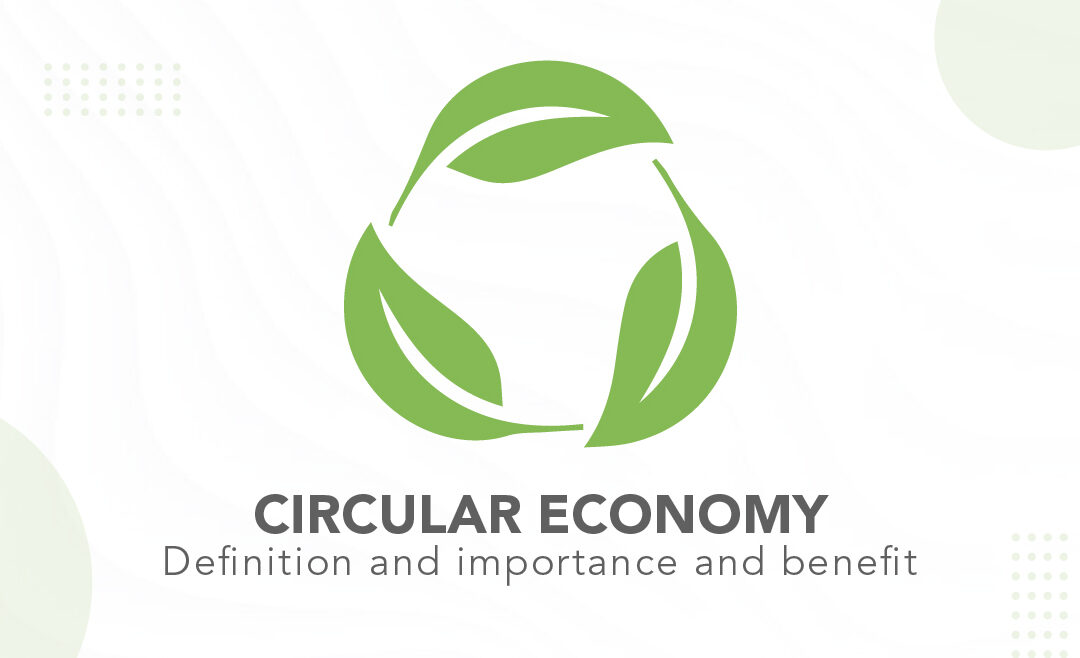Let’s figure out how the Circular Model of Economy is going to make a revolution in this era
The term Circular Economy is a model of production and consumption. It consists of various other factors like sharing, leasing, reusing, repairing, refurbishing, and finally recycling the various existing materials and materials until their utility vanishes. Through this path, the life cycle of any commodity is extended.
In the Linear economy, the first step is to extract the natural raw resources and then transform them into products after they get disposed of. However, unlike the Linear model, the Circular Economy aims to close the distance between the commodity and the natural ecosystem’s cycle, upon which humans are dependent.
This implies, on one hand, disposing of waste – composting biodegradable waste or, if it’s a changed and non-biodegradable waste, reusing, remanufacturing, and at last reusing it. On the other hand, it moreover implies cutting off the utilization of chemical substances (a way to assist recovery of common frameworks) and wagering on renewable vitality.
Let’s have a wider look over the Benefits of the Circular Model of the Economy
Over a long period after the industrial revolution, mankind has been following the linear model of production and consumption. Where raw materials get transformed into final goods, then used and turned into waste that has been many times unconsciously discarded and managed.
On the other hand, the circular economy emphasizes regeneration by intention and design and aims to improve resources’ performance and fight the volatility that climate change might bring to businesses. Here are the various benefits of the Circular economy model.
Healthy and Resilient Soil: Environmental Benefits of the Circular Economy
The strength of the circular economy upon the farming system takes care of the various important nutrients that are returned to the soil through anaerobic processes or composting, which softens the degradation of land and the natural ecosystems. Using this method, waste is returned to the soil. Additionally having fewer residues to tackle, the soil gets healthier and more fruitful and hence, it allows an advantage in the balance of the ecosystem that surrounds it.
Since soil debasement costs US$40 billion annually around the world, a survey reported and has secured up costs such as the increase of fertilizer utilize, the hardship of biodiversity, and mishap of one-of-a-kind scenes – a circular economy might illustrate to be really important for both the soils and the economy.
Reducing Greenhouse Gas Emissions- Environmental Benefits Of The Circular Economy
One of the goals of a circular economy is to have a positive effect on the planet’s ecosystems and to fight the excessive exploitation of natural resources. It has the potential to reduce greenhouse gas emissions and utilize the raw materials, optimize agricultural productivity and decrease the negative externalities brought by the linear model. These are the factors upon which a circular economy can be helpful:
- Because the circular economy utilizes renewable energy that creates less pollution than fossil fuel in the long run.
- Because residues are considered valuable and hence they absorb as much as possible.
More Saved Resources – Economic Benefits Of The Circular Economy
Compared with raw material extraction, both linear, as well as circular models, have the same approach. However, the circular model has the capabilities to lead to a bigger amount of material savings. Considering that the total demand for materials will increase due to the growth in the total world population and middle class, a circular economy leads to lower material requirements, as it skips landfills and avoids recycling, and starts focusing on improving the utility of the product.
New Opportunities Profit – Benefits Of The Circular Economy On Businesses
It will have lower costs on the intermediate goods and in some cases create entirely new profit streams that can be achieved by businesses that move to the circular economy model. However, via this method, In this circular sphere, chances of profit will occur by digging into a new market, cutting costs off with waste and energy reductions, and the assurance of continuity of supply.
What is the importance of a Circular economy?
- Chances to improve the environment – Circular economy could be an asset to tackle the current triple planetary crisis on climate, biodiversity, and pollution stated over an Indian government forum. By keeping resources for a longer time, we’ll eliminate emitting greenhouse gases that are caused by the energy required to make goods. It could also lead to a reduction in habitat loss which will improve biodiversity. Finally, less waste will mean less pollution, such as plastic soup in our oceans.
- Independence from other countries – Various goods and services are imported across the globe for the international dependence on the supply of important raw materials for industry, but also food, the Netherlands is vulnerable to supply chain problems. However, in the circular economy, the Netherlands is least dependent on other countries. Probably, secondary materials could be extracted from the products that were previously destroyed and incinerated.



